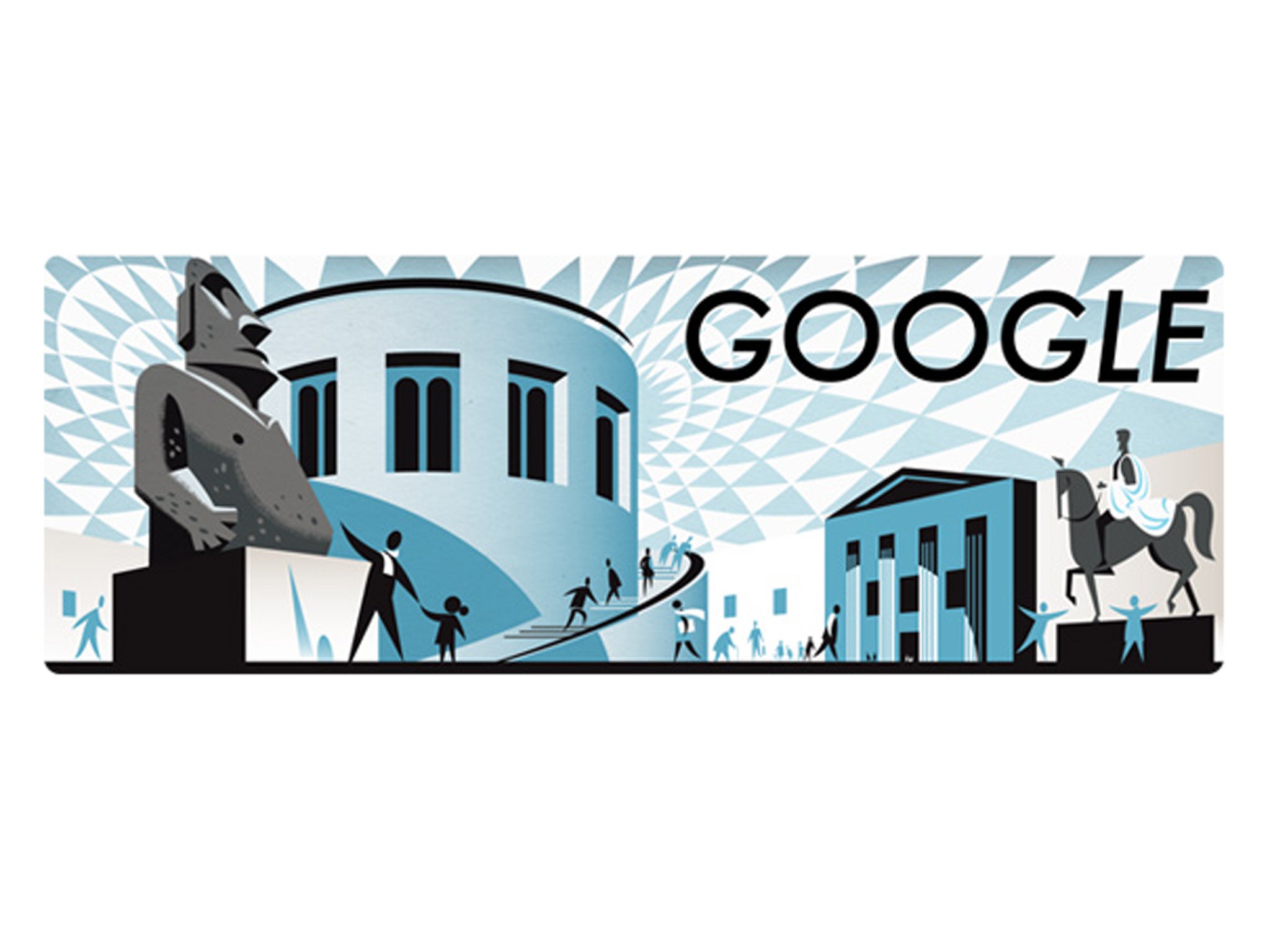255th anniversary of the British Museum: Google Doodle celebrates institution's opening

Your support helps us to tell the story
From reproductive rights to climate change to Big Tech, The Independent is on the ground when the story is developing. Whether it's investigating the financials of Elon Musk's pro-Trump PAC or producing our latest documentary, 'The A Word', which shines a light on the American women fighting for reproductive rights, we know how important it is to parse out the facts from the messaging.
At such a critical moment in US history, we need reporters on the ground. Your donation allows us to keep sending journalists to speak to both sides of the story.
The Independent is trusted by Americans across the entire political spectrum. And unlike many other quality news outlets, we choose not to lock Americans out of our reporting and analysis with paywalls. We believe quality journalism should be available to everyone, paid for by those who can afford it.
Your support makes all the difference.Google has celebrated the 255th anniversary of the British Museum with a Doodle on its search page.
Established in 1753 after the physician and scientist Sir Hans Sloane died and bequeathed his enviable collection of curiosities to King George II, the first exhibition galleries and reading room for scholars opened on 15 January 1759 at Montagu House in London.
In its inception, the museum contained Sloane's collection of around 71,000 objects, including 40,000 printed books, 7,000 manuscripts, and a large group of natural history specimens from across the world.
On its royal assent, the museum was also given two other libraries – the Cottonian Library and the Harlieian library – before they were joined by the Royal Library. In 1957 King George II gave the Old Royal Library and with it the right to copy every book in the land. The libraries would later be separated from the British Museum, along with the British Museum of Natural History and the National Gallery.
Over the years, the British Museum would come to attract specimens from around the world, including those from the round-the-world voyages of Captain James Cook, and in the early 19th century Egyptian artefacts dominated the antiquities displays.
In 1802, permission was given to expand the museum and over the coming years the dilapidated Montagu House building was demolished and in 1825 Sir Robert Smirke's grand neo-classical building that we can see today gradually rose.
The Greek Revival façade facing London's Great Russell Street can be seen in Google's anniversary Doodle, with the old Round Reading Room (now the Wellcome Gallery) sitting in the centre. To the left sits the Easter Island statue of Hoa Hakananai'a.
The British Museum was the first of its kind in Britain, as it belonged not to the church or king, but was freely open to the public and aimed to collect everything. IOt is now a non-departmental public body sponsored by the Department for Culture, Media and Sport, and remains free to visit.
In 2013, the British Museum had its most successful year to date with 6.7 million visits – up 20 per cent on 2012 and beating 2008's previous record of 6 million.
Join our commenting forum
Join thought-provoking conversations, follow other Independent readers and see their replies
Comments